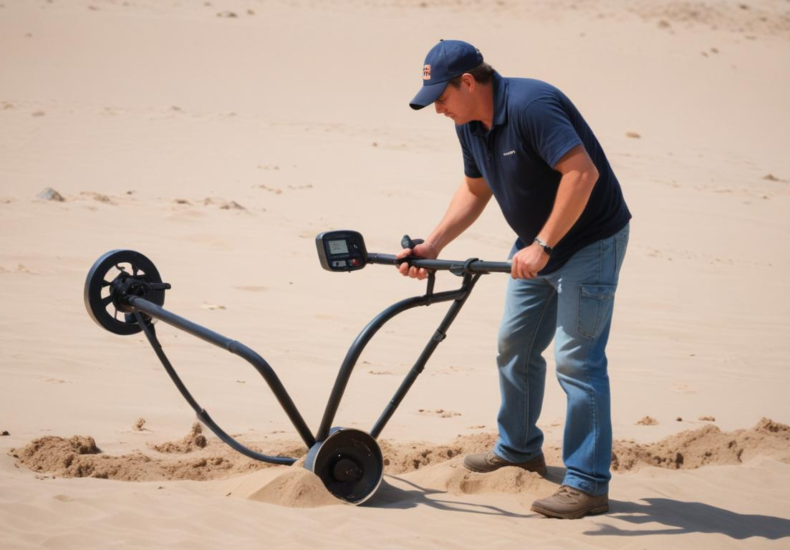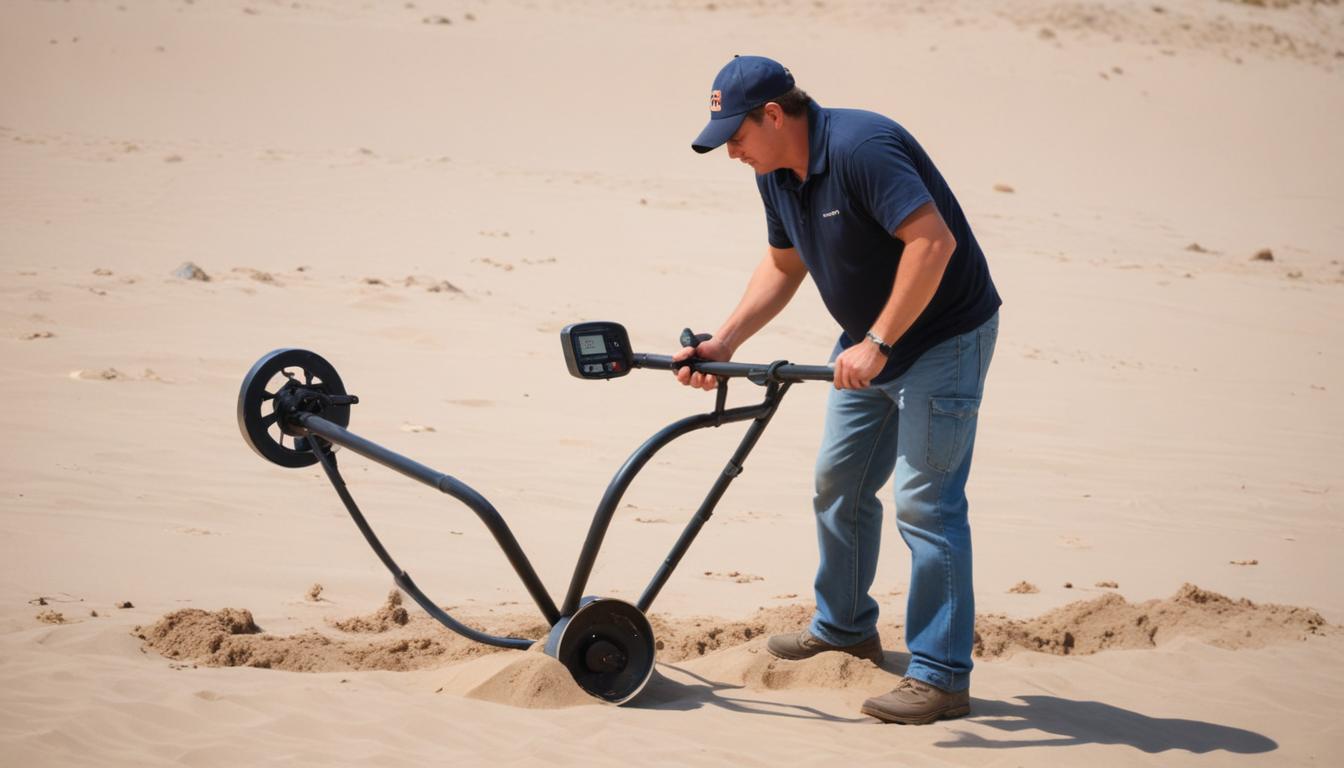
Top features to look for in a metal detector
When evaluating metal detector features, sensitivity and depth detection stand out as key factors crucial to unearthing a variety of metals beneath the surface. Sensitivity refers to the detector’s ability to detect small or fine objects like pieces of jewelry or thin coins. A higher sensitivity setting can help detect the presence of metals from a greater distance or depth, making it particularly impactful in environments where target metals are dispersed sparsely.
Depth detection, on the other hand, indicates how deep the device can effectively locate objects. This capability is largely influenced by the type of ground and the size of the object. For metal detector enthusiasts and professionals alike, knowing the depth capabilities of a detector is essential, as it determines the depth at which the device can still perform optimally without being misled by mineralized soils. Certain models are equipped with advanced features that allow for adjustments based on ground conditions – thus enhancing both sensitivity and effective depth detection.
Understanding these aspects can significantly influence the success rate of your findings during metal detecting excursions. This makes depth detection and sensitivity indispensable topics in any metal detector buying guide. Adjusting the settings according to the specific conditions of the locale can minimize false signals and ensure that your search is both efficient and rewarding. Therefore, familiarizing yourself with these features and learning how to manage them smartly should be considered essential detector tips for any hobbyist or professional treasure hunter.
Discrimination capabilities
Understanding the discrimination capabilities of a metal detector is paramount when sorting valuable finds from the usual clutter of unwanted metals. This feature allows the detector to differentiate between types of metal, such as distinguishing between gold and iron. This selectivity can be particularly beneficial in areas where iron scraps and pull tabs are prevalent, allowing the user to focus on more valuable metals. Advanced models offer customizable discrimination settings where specific conductivity ranges can be set to either accept or reject different metal types.
For hobbyists and collectors particularly, this feature maximizes the efficiency of hunts. By setting their devices to ignore unwanted items, users can save considerable time and focus on digging up those objects that truly pique their interest. Equally, knowing how to manipulate the discrimination settings effectively is one of the most valuable detector tips, as it depends on the specific site and type of treasure being hunted.
However, it’s crucial when setting discrimination levels not to overly restrict the range of metals detected. Overly high discrimination can potentially lead to missing out on desirable finds, like artifacts composed of alloys or low conductivity metals not initially set for detection. Therefore, understanding how to balance this feature according to the goals of your search is an essential skill covered in any comprehensive metal detector features buying guide.
This skill in adjusting discrimination effectively enhances the metal detecting experience, making it a critical aspect to consider for both novice and experienced detectorists. Whether you’re looking into historical relic hunting or beach treasure searches, having a robust understanding of how to use your device’s discrimination technology will lead to more fruitful and enjoyable adventures.
Ground balance adjustment
Adjusting the ground balance on a metal detector is a crucial feature that can significantly enhance the device’s effectiveness in various soil conditions. Ground balance allows the detector to ignore the natural mineralization of the earth, such as iron and salt, that can cause false signals. By calibrating the detector to focus on the metal objects rather than the mineral content of the soil, users are more likely to find what they are actually searching for without constant interruptions from misleading beeps and signals.
This setting is particularly valuable when searching in locations with highly mineralized soils, such as beaches with black sand or areas with high iron content. Without the ability to adjust ground balance, a metal detector might constantly signal due to the minerals in the soil, which can be frustrating and unproductive. Some advanced detectors have automatic ground balance adjustment that calibrates continuously as you move across different terrains, while others require manual adjustment.
Understanding how to control this feature can make a significant difference in the efficiency and success of a treasure hunt. For newcomers learning detector tips, mastering ground balance adjustments can seem complex, but it’s a skill that improves with practice and experience. Indeed, adjusting ground balance is often highlighted as a vital skill in any metal detector features buying guide, offering a clear advantage in enhancing the detector’s sensitivity to actual metal objects without being thrown off by the naturally occurring metals in the soil.
Learning to set the ground balance correctly can help detectorists avoid unnecessary digging and focus on genuine finds, ensuring a more enjoyable and rewarding search. This makes it a fundamental capability to look for when selecting a metal detector, especially for those planning to explore diverse and challenging terrains. Additionally, some high-end metal detectors offer preset ground balance settings designed for specific conditions—another useful feature for those seeking optimal performance across different detecting environments.
Type and size of search coil

The type and size of the search coil on a metal detector are crucial components that dictate the device’s overall performance and suitability for specific environments or targets. The search coil, acting as the detecting ‘eye’ of the device, greatly influences both the depth at which the detector can find metal objects and the size of those objects it can detect.
Larger coils are generally capable of deeper detection but may sacrifice a level of sensitivity to smaller objects, making them ideal for searching in wide open spaces such as beaches or fields where greater ground coverage is desired. On the other hand, smaller coils, while limiting the depth of detection, offer greater sensitivity to smaller objects and improved target separation in trash-laden areas. These coils are typically recommended for areas with a lot of metallic debris or when searching for small items like earrings or fine chains.
Moreover, the type of coil is another vital aspect covered in any comprehensive metal detector features buying guide. Concentric and Double-D (DD) coils are the two most common types used in metal detectors today. Concentric coils, characterized by their concentric circles, offer a precise pinpointing advantage, which is beneficial when exact target location is necessary. DD coils, identified by their overlapping blade-shaped loops forming a D-like shape, provide enhanced detection in mineralized soils, which is a significant advantage when exploring grounds with high mineral content.
It’s essential to consider both the type and size of the search coil to match your specific detecting needs. While a larger DD coil might be the best companion on a beach, a smaller concentric coil could be the superior choice when navigating a littered historical site. Knowing how to choose the right coil based on your usual searching locations or desired targets is not only a valuable detector tip but also a critical decision in the pursuit of productive metal detecting outings.
Understanding the implications of coil size and type thus forms an essential part of any sensible metal detector selection process and should be carefully considered by any enthusiast looking to optimize their equipment for the best possible results.
Weight and ergonomics
The weight and ergonomics of a metal detector are crucial factors that significantly affect the user’s comfort and endurance during long hunting sessions. A light detector reduces strain on your arm and shoulder, allowing for longer periods of use without fatigue. This is particularly important for those who spend extensive hours scanning large areas or who may have lower physical stamina. Ergonomically designed models with well-balanced weight distribution ensure that the detector feels right in your hands, encouraging proper posture and reducing the likelihood of discomfort.
Adjustable handles and armrests are important ergonomic features that cater to the needs of various users. These adjustabilities make it possible to set the metal detector to match the individual’s arm length and strength, which is instrumental in maintaining comfort during the search. Additionally, ergonomic grips help to minimize hand fatigue and prevent slippage, ensuring a firm hold for precise control over the device’s movement.
Comfortable padding on the armrest can also make a noticeable difference, especially during extended use where the extra cushioning protects against rubbing and pressure points. Design considerations such as these are often highlighted in metal detector features buying guides, as they play a significant role in the overall user experience.
Selecting a metal detector that prioritizes weight and ergonomics is not just about comfort, but also about effectiveness in the field. A balanced, well-designed model allows detectorists to cover more ground efficiently, and focus more on their surrounding environment rather than discomfort or the effort of swinging an unwieldy tool. Therefore, when choosing between models, considering these aspects is crucial and should be part of any informed decision guided by comprehensive detector tips in a buying guide.
Ultimately, testing different models to find one that feels right in terms of both weight and ergonomics can significantly enhance your metal detecting adventures. Each user may find a different balance of features that works best, so personal testing and consideration of these aspects are highly recommended.
You may also like
Archives
Calendar
| M | T | W | T | F | S | S |
|---|---|---|---|---|---|---|
| 1 | 2 | |||||
| 3 | 4 | 5 | 6 | 7 | 8 | 9 |
| 10 | 11 | 12 | 13 | 14 | 15 | 16 |
| 17 | 18 | 19 | 20 | 21 | 22 | 23 |
| 24 | 25 | 26 | 27 | 28 | 29 | 30 |
Leave a Reply